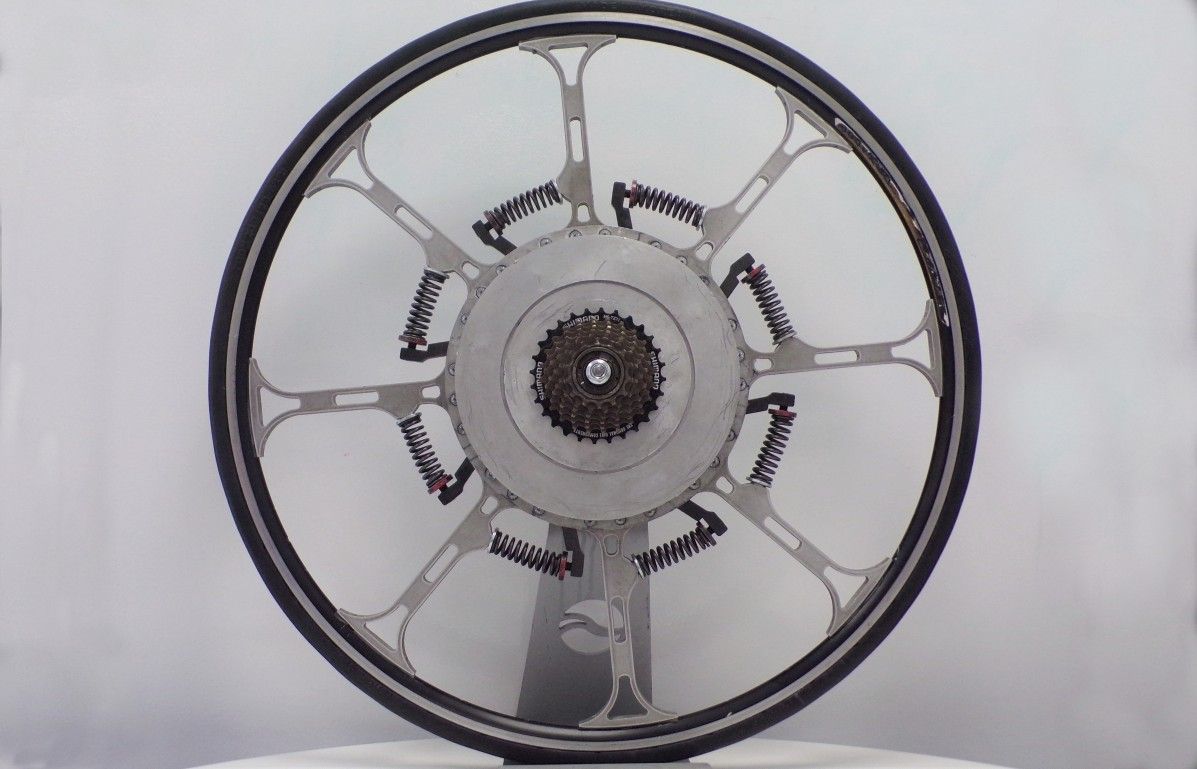Woosh is right. I share his view that this is indeed a silly idea.
A good bicycle is already an efficient device for converting energy into forward motion. The main issue is drag - which is why it is possible to cycle at over 150mph if air resistance is eliminated. There are also various areas of friction, and of course one has to overcome inertia to get going.
The "Superwheel" does nothing to reduce drag or friction, and as it is very heavy it will increase inertia. So how can it offer a "more than 30% energy efficiency improvement"? If this thing was for real, it would be fitted to all wheeled vehicles, not just bikes.
In physics, though, you don't get something for nothing. There has been a long history of people trying to harness the force of gravity/weight to produce a perpetual motion machine.
Has anyone tested this scientifically? Say you had two otherwise identical crank-drive e-bikes, one with a "Superwheel" and one with a normal wheel. You could ride them side by side an see which consumed more electricity over a given journey. If the "Superwheel" offered the claimed 30%+ advantage it would be a clear winner.
I would put money on the normal wheel winning.

 www.cyclingweekly.com
www.cyclingweekly.com

 www.cyclingweekly.com
www.cyclingweekly.com







